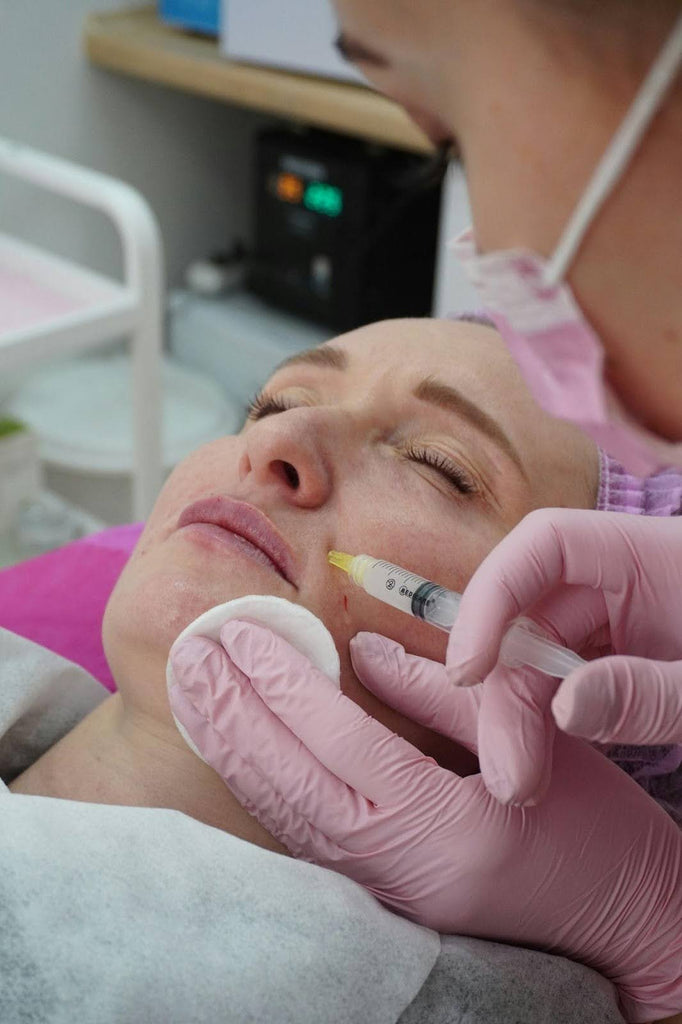Prevention Rather Than Correction: Why Younger Clients Are Turning to Wrinkle-Care Earlier

A quiet change is taking place in the beauty parlors. The seats once sat a customer in their 40s and 50s now sit faces that are barely making it to late 20s. These are not people who are looking for change. They are trying to hold on to what they have. Wrinkle-care has started to move earlier, creeping into timetables that were once reserved for progressive years.
The New Way People Think About Aging
For decades, the notion of "anti-aging" has been reactionary. Something you do once the lines show up. But things are shifting. Younger clients no longer wait for the mirror to reveal the first wrinkles. They're taking action before the lines become too noticeable, before the habits of squinting or furrowing begin to take their negative toll.
This isn't vanity. It's control. About realizing that the secret to keeping your skin as natural and expressive as possible is to take care of it before time gets to test it.
The Subtle Shift: From Fixing to Maintaining
Younger people today are in perpetual exposure. Every selfie, every interaction, every update—faces are out there all the time. That makes prevention make sense. Like wearing sunscreen. Such as eating cleaner.
Instead of running after "youth" down the road, they protect what already exists. Small tweaks, daily routines, and judicious choices. It's not so much about changing their look, but more about maintaining their skin calm, smooth, and rested.
They're better informed than ever, too. They read packaging, listen to dermatologists on Twitter, and talk about treatments once spoken of in secrecy. What was once seen as extreme now feels like maintenance.
Where Science Meets Subtlety
Modern wrinkle care no longer freezes or erases. It's precision and restraint. Treatments are lighter, spaced out, and designed to smooth over muscle movement instead of completely halting it.
Product has also changed. Formulations now treat early micro-movements, moisture, and cell regeneration with surgical accuracy. Clinics are creating plans that will fit every skin type and age stage. Prevention isn't a one-size-fits-all deal—it's tailored, subtle, and deeply intimate.
Quiet Confidence and Preventive Choices
It's not only about appearance. It's also about being comfortable in your own skin. That subtle confidence boost when you look amazing even after staying out late or sleeping poorly. It's quiet but powerful.
More people are also finding that preventing wrinkles is not strictly aesthetic—it's part of overall wellness. Taking care of your skin is taking care of how you feel presenting yourself in the world.
Well-known botox treatments are now one of the go-to options for practitioners working with this younger demographic. Micro-doses and cutting-edge techniques are used by practitioners to allow clients to maintain their own look while delaying deep lines. It's not so much "getting work done" anymore. It's care that becomes a part of life quietly, respected with precision and intent.
That moment of serenity after treatment - not puffy, no drama, just a smoother look that is you. That's the appeal.
The Psychology of Early Action
Starting sooner isn't fear of aging; it's choosing how you do it. There is security in knowing you're taking a step in the right direction toward your long-term goals. Similar to starting a pension plan early, or eating more greens—it's taking initiative.And attitude matters. Prevention is often linked to self-knowledge. You notice your stress, your habits, your facial expressions. You know what your face does when you are tense or sleep-deprived. Care becomes thoughtful, almost contemplative.
A Culture That Redefined Beauty
Social media hasn't only shifted trends—it shifted perception. Authenticity is more valuable than perfection. Younger clients aren't seeking to eliminate features. They need to accentuate them, subtly. Treatments that honor natural contours and motion match this new wave precisely.
 The aspiration isn't porcelain. It's presence. A look that proclaims rested, not redone.
The aspiration isn't porcelain. It's presence. A look that proclaims rested, not redone.
A Different Kind of Routine
Younger generations are building beauty habits on long-term consistency, not seasonal frenzy. Skincare is supplemented with diet, sleep, and hydration. Treatments are spaced, restrained, and designed to keep results cumulative.
Some even treat wrinkle-care like workout sessions for the skin—regular work that maintains tone and flexibility.
-
Regular hydration and mild exfoliation
-
Nutrient-rich food for collagen support
-
Periodic professional attention
-
Sun protection as a daily habit
These little things add up. They not only decide the look of the skin, but the way it behaves.
The Fine Balance of Prevention
There is an art to doing less. That is what younger clients are learning. Subtle correction in the beginning might be the secret to avoiding giant treatments later on. Professionals stress balance: correct minor zones, let the skin regain itself, and don't do too much.
It's an approach of respect—for the skin, for its rhythm, for the person under it.
The Future Face of Beauty
Undoing time is no longer in the cards for wrinkle-care. It's about caring for yourself at the right moment. Preventive care has reorganized the entire rhythm of the beauty industry.
Younger clients are also imparting to us something very valuable here: taking care of your face at an early age does not mean fearing age. It means being ready to welcome it with dignity.
The focus has turned inward—toward feeling lighter in your own skin, with a peaceful kind of confidence that doesn't holler for attention. The kind that comes from knowing you're not trying to look younger than you are. You're simply caring for what's already beautiful.
